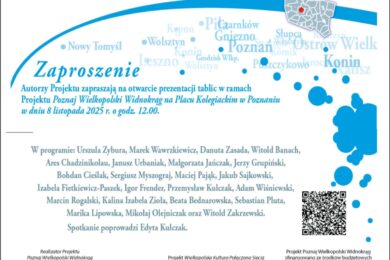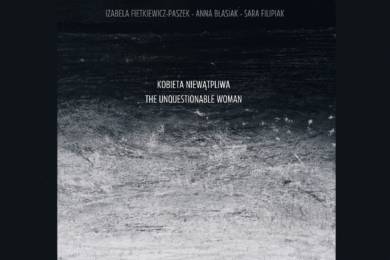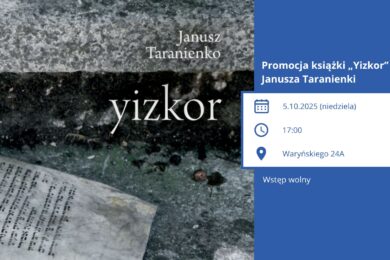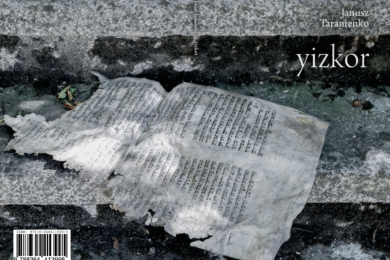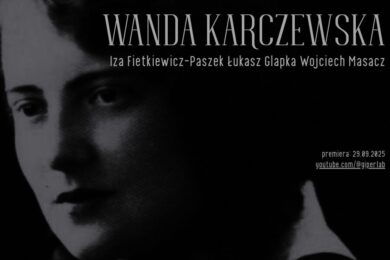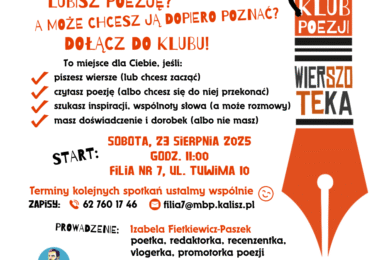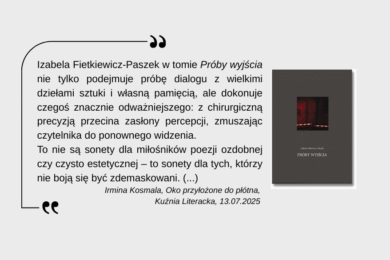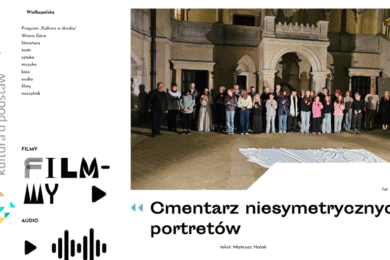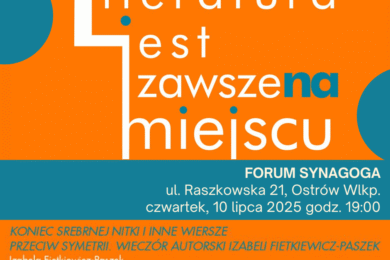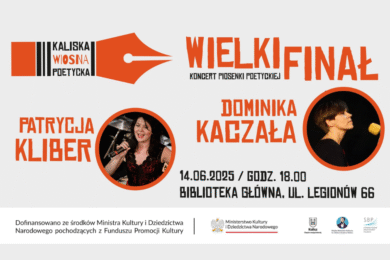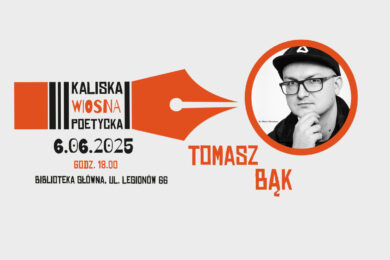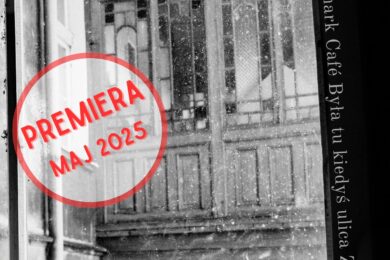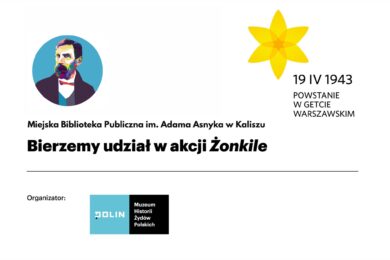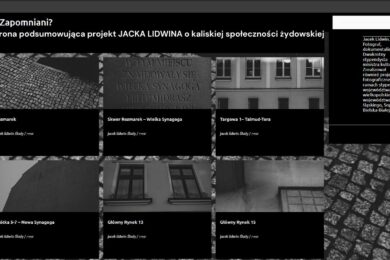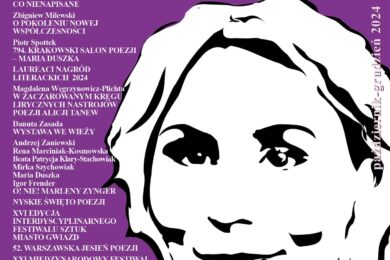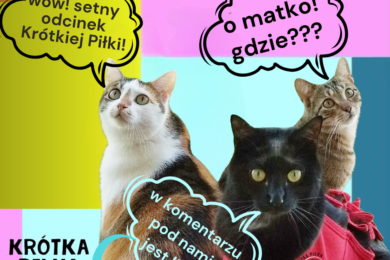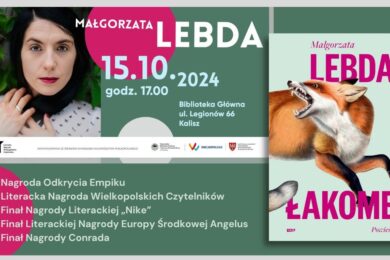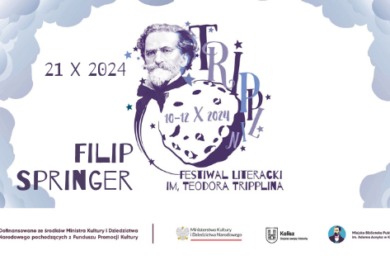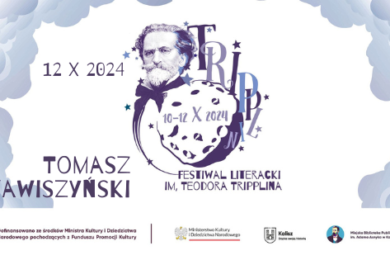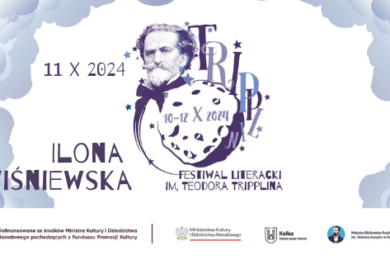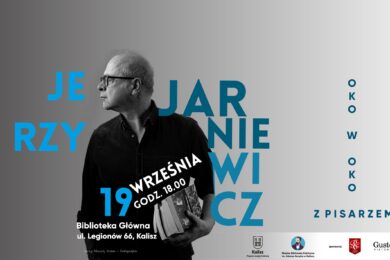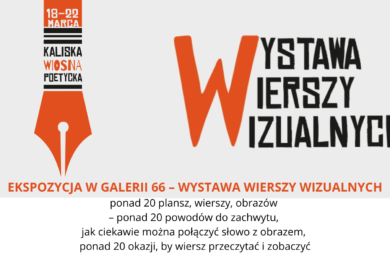Cezary Sikorski
Jest horyzont, za nim jest dotkliwsze… O spotkaniu Izy Fietkiewicz-Paszek[1] z Jarkiem Wójcikiem[2] w książce Próby wyjścia.[3]
Cezary Sikorski – Próby wyjścia, o spotkaniu poetki z malarzem
Chciałbym opowiedzieć o zdarzeniu, które od początku do końca miało wymiar transcendentalny w znaczeniu, którym zwykliśmy się posługiwać od czasów Immanuela Kanta. Bo cóż znaczy przekraczanie granic własnego doświadczenia? Czy można doświadczyć czegoś, czego się nie doświadcza? Kant zakładał, że jest to możliwe i że dzieje się to dzięki formom intelektualnej apercepcji. W poezji Izy Fietkiewicz-Paszek jest to przekraczanie horyzontu własnych i zbiorowych nawyków. W obu przypadkach efekt jest równie ciekawy. Dowód w tej kwestii będzie miał postać anegdoty.
W listopadzie 2009, w korespondencji między Izą Fietkiewicz-Paszek i mną, pojawił się pomysł napisania książki złożonej z samych sonetów. Pod koniec grudnia 2009 Iza napisała trzy sonety do obrazów Rembrandta i Belliniego (wg Grochowiaka), zaraz po nich trzy do obrazów Zdzisława Beksińskiego. W ciągu 6 miesięcy powstały prawie wszystkie wiersze z pierwszej – „klasycznej” – części Prób wyjścia. Reszta „beksinskich”, ekfrazy Chagalla, Boscha. Wtedy też zarysowała się w rozmowach druga – „współczesna” – część tej książki i powstało pytanie: czy sonety z drugiej części mogą być ekfrazami?
Pytanie trudne, albowiem większość sonetów z tej części książki powstała wcześniej lub w trakcie i była w założeniu – niemalarska. Lecz czy taka była faktycznie? Odpowiedź nadeszła nieoczekiwanie. W lecie 2010 roku odwiedził Szczecin Jarek Wójcik, współautor wystawy w szczecińskim oddziale Muzeum Narodowego: SMS – Szczecin, Melbourne, Szczecin. Jako jedyny dostał do przeczytania roboczą wersję książki Izy i tuż po lekturze podzielił się ze mną wrażeniem, że większość prac przywiezionych przez niego do Szczecina to malarskie wariacje „współczesnych” sonetów Izy. Podobnie zareagowała autorka Prób wyjścia. To były obrazy nie do, ale jej wierszy. Powstawały w oderwaniu, lecz w niezwykle bliskich wzajemnych relacjach. Co więcej, sposób w jaki Iza uporządkowała obrazy w pełni pokrywał się z równocześnie przygotowaną – niezależnie – propozycją Jarka Wójcika. Dość powiedzieć, że te dwie tak bliskie sobie osoby do dziś nie poznały się, choć – jak widać – w istocie znają się bardzo dobrze.
Paradoks? Pozorny, jeśli tylko pamięta się o sposobie w jaki przenika przez kolejne światy poezja Izy Fietkiewicz-Paszek. Każdy wiersz z tomu Prób wyjścia jest wszakże świadectwem empatii języka wobec obrazu, poezja styka się bezpośrednio nie tyle z malarskim przesłaniem, co z nastrojem tworzonym przez malarską kompozycję, przez niepowtarzalne odcienie i barwy. To właśnie kreuje wyrazistość słowa i dodaje sił jej poetyckiej frazie.
Po drugiej stronie tego samego pozornego paradoksu znajdują się obrazy Jarka Wójcika. Ich literackość nie budzi wątpliwości. Oto cykl szkiców, który poświęcił Jarek książce Izy już po jej wydrukowaniu. Tytuł 5-cioczęściowego cyklu … wszystko powraca do bieli [… and everything emptying into white]zachęca wręcz do hermeneutycznych analiz.
Czyż nie taki sposób analizy narzuca powyższy szkic Bardzo wąskie schody [Very narrow steps]? Tytuł i obraz przenikają się tutaj wzajemnie. Tworzą złudzenie oczywistości. Podtrzymują przekonanie, że rzeczywistość jest właśnie taka, jaką ją widzimy. I to nas uspokaja, to godzi nas ze światem.
Podobnie w szkicu Tu nie ma więcej miejsca [There’s no more room up there tu] autor nie pozostawia obserwatorowi zbyt wiele wolnej przestrzeni.Trudno tu nawet o miejsce na interpretację odrębną od narzuconej przez tytuł. Wszystko jest wypełnione – dosłownie i w przenośni. Nie ma miejsca na żadną wieloznaczność. Zaszufladkowanie jest jak porządek, który budujemy po to, by w nocy nie budzić się z krzykiem.
Lecz taka tożsamość zwodzi swoją prostotą. Poza oczywistościami, poza tautologiami, które świat wciąż nam narzuca, znajdują się realne aporie, sprzeczności egzystencji. W nich wąskie schody nie są wcale wąskimi schodami, a malutkie szuflady pomieścić mogą w sobie wszystkie dobre i złe zdarzenia. Zamieszkując w świecie jesteśmy bowiem wciąż po dwu stronach. Tej, która utrzymuje nas na powierzchni i pozwala żyć dzięki prostym identyfikacjom. I tej, która poprzez negacje prowadzi do wyłączonego środka; tu wszystko, co jest ujawnia drugą stronę. Po drugiej stronie wszystko, co jest – zarazem nie jest.
Taki jest sens Innej strony [Other side] Jarka Wójcika:
Właśnie po tamtej stronie spotkali się ze sobą Iza Fietkiewicz-Paszek i Jarek Wójcik. By wspólnie przekroczyć horyzont rzeczy ewidentnych, by razem malować niepokój, jaki zawsze towarzyszy tym, którzy czują, że w świecie wszystko jest dwoiste, jak słowo i milczenie, kolor i biel, życie i śmierć. Przeczucie nie myli obojga, a Iza dopisuje do niego puentę:
Dramat się dopełni
niebawem – nie będzie już nic poza szkicem
świata; i milczeniem. Pozostaną żywe,
wyraźne kolory; ocali je werniks.
(Samotność Chagalla)
(c.s.)
[1] Izabela Fietkiewicz-Paszek, poetka, autorka tekstów piosenek, recenzji i felietonów. Mieszka w Kaliszu. Redaktor magazynu sZAFa i kwartalnika Migotania, Przejaśnienia. Publikowała m.in. w Odrze, Autografie, Portrecie, Poezji dzisiaj, RED, Akcencie, Frazie, Arteriach, Cegle, a także we francuskim czasopiśmie literackim VOIX D’ENCRE. Wydała książkę Portret niesymetryczny (2010). Jej wiersze ukazały się w dwujęzycznej antologii Free Over Blood (2010). Próby wyjścia to jej drugi tomik poetycki.
[2] Jarek Wójcik urodził się w Szczecinie. Od 1985 roku mieszka i tworzy w Melbourne w Australii. Ukończył historię sztuki na UAM w Poznaniu i grafikę w Box Hill College w Melbourne. W roku 1992 zakłada studio minusart. Jest autorem szeregu wystaw indywidualnych w Australii, Francji, Polsce oraz uczestnikiem wielu wystaw i projetów grupowych. Reprezentowany przez Catherine Asquith Gallery w Melbourne, Charles Hewitt Gallery w Sydney i Gallery East w Perth.
[3] Izabela Fietkiewicz-Paszek, Próby wyjścia, Zaułek Wydawniczy Pomyłka, Szczecin 2011
—————
Cezary Sikorski
Here is the horizon, beyond there is sullen… About the meeting of Iza Fietkiewicz-Paszek1 with Jarek Wójcik2 in the book Attempts to Depart (Próby wyjścia)3
I would like to tell a story about an event, which from the beginning to the end had a transcendental quality in the way we have been accustomed to use, from the time of Immanuel Kant. Well, what does it mean to cross the boundaries of one’s experience? Is it possible to experience what hasn’t been experienced? Kant assumed that it was possible, and that it can occur due to forms of intellectual apperception. In Iza Fietkiewicz-Paszek’s poetry this is the going beyond the horizon of individual and collective habits. In both cases the impact is equally interesting. The proof in this matter is of an anecdotal nature.
In November 2009, in the correspondence between Iza Fietkiewicz-Paszek and myself an idea to write a book made up purely of sonnets was born. At the beginning of January 2010 Iza wrote three sonnets about Zdzisław Beksińki’s paintings. Almost all poems from the first “classical” part of Attempts to Depart4 were created within 6 months. The remainder of the “beksińskis”, ekphrasis to works of Chagall, Rembrandt and Bellini (after Grochowiak). Then, during our conversations, the second – “contemporary” part of the book was outlined and the question had soon arisen: could the sonnets in the second part take the form of ekphrasis?
1 IzabelaFietkiewicz–Paszek, poet, songwriter, author of critical reviews and feuilletons. Lives in Kalisz, Poland. Editor of sZAFa magazine and the quarterly Migotania, Przejaśnienia. Published in Odra, Autograf, Portret, Poetry Today, RED, Akcent, Arterie, Cegła as well as in French literary magazine VOIX D’ENCRE. She published Portret asymetryczny (2010). Her poems feature in a bilingual anthology Free Over Blood (2010). The Attempts to Depart (Próby Wyjścia) is her second poetry volume.
2 Jarek Wójcik born in Szczecin, Poland. Since 1985 lives and works Melbourne, Australia. Graduated from University of Poznan, Poland with degree in Art History and studied at Box Hill College, Melbourne. In 1992 established minusart studio. Participated in many individual exhibitions in Australia, France and Poland, as well as in in group shows and projects. Represented by Catherine Asquith Gallery in Melbourne, Charles Hewitt Gallery in Sydney and Gallery East in Perth.
3 Izabela Fietkiewicz-Paszek, Attempts to Depart (Próby Wyjścia), published by Zaułek Wydawniczy Pomyłka, Szczecin 2011.
4 Volume Attempts to Depart (Próby Wyjścia) was launched on 3rd June 2011 in Szczecin. Essay about the meeting of Jarek and Iza accompanied this event.
A difficult question, as most of the sonnets in this part of the book were written either earlier or at that time, and were regarded non-pictorial. But were they really? The answer was found unexpectedly. In the summer of 2010 the co-author of the SMS – Szczecin, Melbourne, Szczecin exhibition at the National Museum in Szczecin, Jarek Wójcik, visited the city. As the only person to have been given the draft copy of Iza’s book to read, he shared with me his impressions that most of the works he brought with him to Szczecin are the visual variations of Iza’s “contemporary” sonnets. The response of the author of Attempts to Depart was similar. These were the paintings not for, but to her poems. Created in isolation, yet in remarkable mutual affinity. Further more, the way Iza organised the images corresponded entirely with the proposal independently developed by Jarek Wójcik. Suffice to say, that even though these two people had, to this day, not met, inherently they knew each other quite well.
Paradox? Only seemingly if, we keep in mind the way in which the poetry of Iza Fietkiewicz-Paszek permeates through various worlds. After all, every poem in the volume Attempts to Depart is a testimony to linguistic empathy towards the images. The poetry is directly at the interface not as much with the visual message as with the mood created by the visual composition, and unique hues and shades. And that is what creates the vivacity of words and supports the poetic expression.
On the other side of the same apparent paradox are the works of Jarek Wójcik. Their narrative quality leaves no doubts. Here is the series of works on paper that Jarek Wójcik consigned for Iza’s book after it had been published. The title of this 5 part series …and everything emptying into white, invites a hermeneutic enquiry.
Isn’t this just the way of interpretation provoked by the above drawing Very narrow steps? The title and the image mutually permeate. Create an illusion of the obviousness. They hold a conviction, that the reality is exactly the way we see it. And this calms us down and reconciles ourselves with the world.
Similarly, in the drawing There’s no more room up there the author does not leave the spectator with too much free space. Here, it is hard to have a room for interpretation other than the one imposed by the title. Everything has been filled out literally and figuratively. There is no room for ambiguity. The pigeonhole is like an order we make not to wake up at night screaming.
However, such an identity is deceitful through its own simplicity. Apart from the obviousness, apart from the tautologies that have been imposed on us by the world, there are real aporiae, existential contradictions. Within these the narrow steps are not narrow at all, and small drawers can fit in all the good and bad experiences. Whilst dwelling in this world, we are still on both sides. The one, that holds us on the surface and allows living through making simple identifications. And the one, which through contradictions, leads on to the absolute core; here everything that exists, reveals the other side. On the other side everything, that exists – also doesn’t.
Such is the meaning of Other side by Jarek Wójcik:
Here, in this other side, is where they met – Iza Fietkiewicz-Paszek with Jarek Wójcik. To cross, side by side, the horizon of trivial matters, to paint together the disquiet that follows those who feel that in life everything is dual like utter and silence, colour and whiteness, life and death.
Premonition hasn’t misled them, and Iza adds on a closing line:
Drama will fulfil itself
before long – nothing will be there but sketch
of the world; and silence. Breezy, luminous
colours prevail; to be rescued by the varnish.
(Chagall’s solitude)
Translated by Ewa Gierymska-Wójcik
